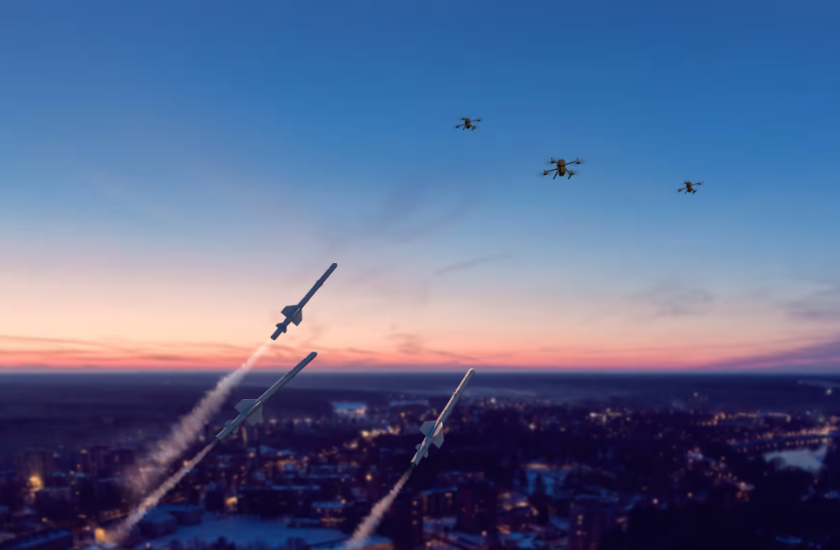By Tim Mahon
Seeking to “refine the inner layer” of multi-layer air defence solutions, Saab has drawn on its extensive experience in sensors, software and effectors to develop the Nimbrix surface to air missile, specifically aimed at the counter-UAS role.
Mats-Olof Rydberg, head of the company’s GBAD product unit, told journalists in an online briefing on 27 August that Nimbrix – which will be formally unveiled at DSEI in London next month – is intended to bridge the gap between gun-based C-UAS solutions and heavier VSHORAD missiles such as its own RBS 70 NG. By comparison with the latter’s 9km range, the 1 metre, 2.5-3kg Nimbrix will cover the 2-5km range bracket. He emphasised the missile will be scalable in production and will respond to the swift evolution of threats and technologies by adopting a spiral development path.
Throughout the development programme, Saab has paid close attention to the issues of speed – both from the perspective of programme acceleration and the issue of addressing the very short windows of opportunity to mount an effective counter to a hostile UAS. At a range of 6km, a C-UAS operator may have as much as 60 secs to detect, identify, track and engage the target: at 2km that window shrinks to 15 secs, according to Angelica Persson, Saab’s senior business development executive for C-UAS. Development began in June 2024 after concept studies over the previous two years then, according to Persson, “concept to impact” (successful firing trials) occupied the remarkably brief timeframe of just 84 days. This encompassed evaluation and trials in the Swedish armed forces’ LOKE (light, operational, kinetic and electronic) programme in Gotland in June and the recently mounted Baltic Trust 2025 exercise in August. Test firings (at least five to date) have all been at the shorter end of the missile’s range envelope, since engagements at the stated maximum optimal range will require an enhanced motor. Nonetheless, Persson stated that all parties involved in the evaluation trials to date have expressed considerable satisfaction at the system’s performance.
Currently described by Rydberg as being at TRL 6, the Nimbrix programme has been conceived from the outset to be a flexible, agile programme in terms of development: the current IR seeker can be replaced with an RF seeker at need, the alternative motor is under investigation and the programme is “ready to take to market now,” he added. Though neither executive would be drawn on the identity of customers with whom negotiations may already have begun, the company is confident that customers could receive missiles during 2026. Part of the commitment to ensuring security and rapidity of supply will apparently involve manufacturing in customer locations.
Close attention has been paid to optimizing acquisition costs compared with heavier, more costly solutions such as RBS 70 NG. Accordingly, additive manufacturing solutions have been sought in some airframe components and a careful focus has been applied to innovative supply chain management.
Nimbrix is an agile, not to say graceful, solution for a thorny problem. Iterative development to keep up with threat and technological evolution will be key in succeeding in this goal. And that carries its own challenge: “We have been quite successful to date in managing process improvement to improve speed of reaction and overall system efficiency,” said Persson. “But to continue to integrate third party and our own components into a system of systems approach – that requires continual management of culture change”. Saab has something a reputation to uphold in embracing and implementing culture change – it will be interesting to see whether they can continue down the path.




